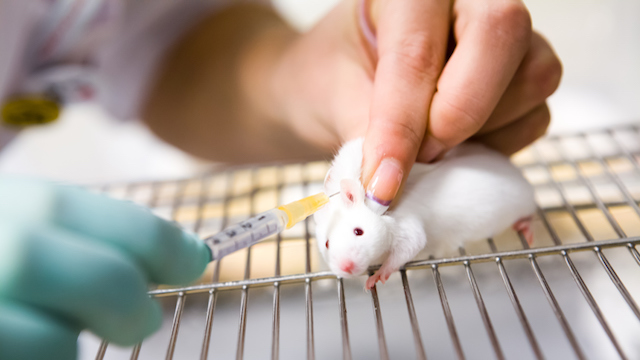Towards the final stages of diseases such as cancer and kidney disease, many patients develop cachexia, a devastating condition in which muscle mass and fat reserves waste away, leading to uncontrollable weight loss and sometimes death. Cachexia can also surface during infections, for instance, by HIV, tuberculosis, malaria, and other parasites. The condition can’t be cured by getting patients to eat or by giving them nutritional supplementation, pushing scientists to better understand its underlying causes.
Now, researchers have identified a mechanism by which viral infection can lead to cachexia. In mice infected by a particular virus, killer T cells trigger the wasting of fat tissue and body weight, although how they do so is still unclear. The findings were published on Monday (May 20) in Nature Immunology.
“Currently, we don’t have a therapy in cachexia,” notes Denis Guttridge, a cancer biologist at the Medical University of South Carolina who wasn’t involved in the new research. “This is a study that opens up the possibility of a new therapeutic target that we should consider.”
To understand how infection can drive cachexia, the researchers turned to a well-established model of viral infection: mice infected with lymphocytic choriomeningitis virus (LCMV), a rodent-borne pathogen that can also infect humans. Within a week of being exposed, the animals mirrored symptoms of cachectic human patients, the researchers observed: they moved less, lost up to 20 percent of their body weight, and parts of muscle and fat tissue melted away.
Like human cachexia patients, the rodents eat and drink less even though they have access to food. Importantly, the infected mice don’t re-gain the weight when force-fed. In the latest study, the team gave the mice glucose, olive oil, and protein, to no avail. This is in line with human cachectic patients, explains Hatoon Baazim, a doctoral student in immunologist Andreas Bergthaler’s lab at the Austrian Academy of Sciences who led the experimental work. And it stands in contrast to the eating disorder anorexia, in which people also restrict calories and commonly lose weight to dangerous degrees. “With anorexia, if you supplement with nutritional support, you can [treat] it, but with cachexia you can’t.”….







